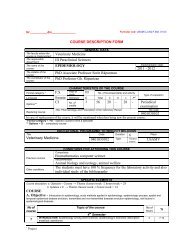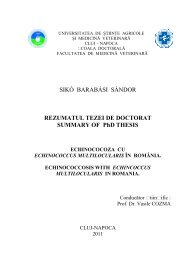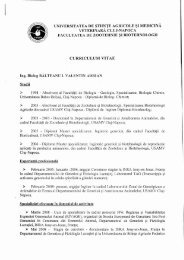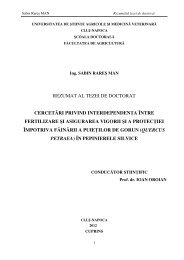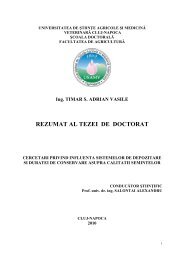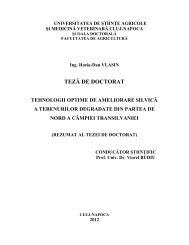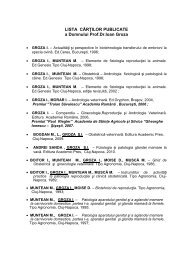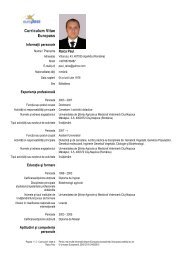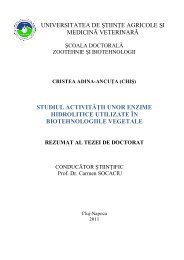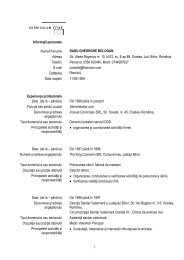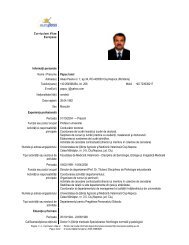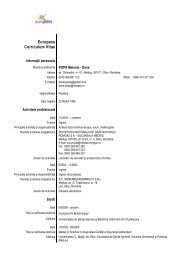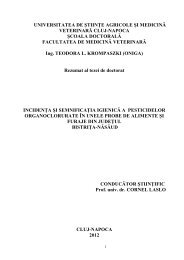Marioara Urda _Grebenisan_ rezumat_teza_engleza - USAMV Cluj ...
Marioara Urda _Grebenisan_ rezumat_teza_engleza - USAMV Cluj ...
Marioara Urda _Grebenisan_ rezumat_teza_engleza - USAMV Cluj ...
Create successful ePaper yourself
Turn your PDF publications into a flip-book with our unique Google optimized e-Paper software.
<strong>Marioara</strong> GREBENIŞAN Summary of the PhD thesis<br />
Research on the structure of di- and tetraploid red clover seed plants and the influence of meiotic<br />
anomalies on the fertility of autotetraploid forms<br />
The high number of aborted ovules in the tetraploid genotypes can be<br />
explained by several causes, among which ovary sterility, determined by anomalies<br />
of the embryonic sac, represents a limitative factor for the seed production capacity<br />
in plants. Another cause of low fertility is represented by the high number of<br />
unfertilized ovules, respectively the low number of ovules with formed embryos<br />
(table 5.13 and 5.14).<br />
Although the study of embryogenesis does not intend to fully explain the<br />
causes of the lower fertility of the tetraploid red clover genotypes, it still points out<br />
some genetic aspects with causal effects upon unsatisfactory seed yields.<br />
Analyzing the various factors that can reduce fertility in autotetraploid red<br />
clover , we were interested in cytological and genetic causes triggering multivalent<br />
chromosomes, gametes and aneuploidy plants, ovaries and embryo abortion,<br />
overcoming a number of alleles/locus caused by abnormal meiosis in tetraploid<br />
forms, low pollen fertility etc.<br />
It should be noted that the families of tetraploid red clover used in our<br />
studies are differentiated in terms of average fertility. From here we can draw the<br />
conclusion that there occurs a “family effect”, which should be taken into account<br />
in establishing relationships between meiosis and fertility abnormalities. The studies<br />
have revealed three types of abnormalities, with a relatively high frequency,<br />
namely: the presence of monovalent, divalent and tetravalent, the irregular presence<br />
of anaphase I, the presence of supernumerary microspores.<br />
It was shown that the irregular distribution of anaphase leads to the finding<br />
that approximately 50% of infertility is due to this cause.<br />
It was noted that unviable pollen grains are the result of meiotic<br />
abnormalities, without being able to explain that this phenomenon singularly<br />
influences the low fertility of polyploids.<br />
If abnormalities occur in the case of macrosporogenesis, they are<br />
undoubtedly the cause of a decrease in fertility due to the abortion of non-equivalent<br />
embryos (table 6.4, table 6.5).<br />
12



